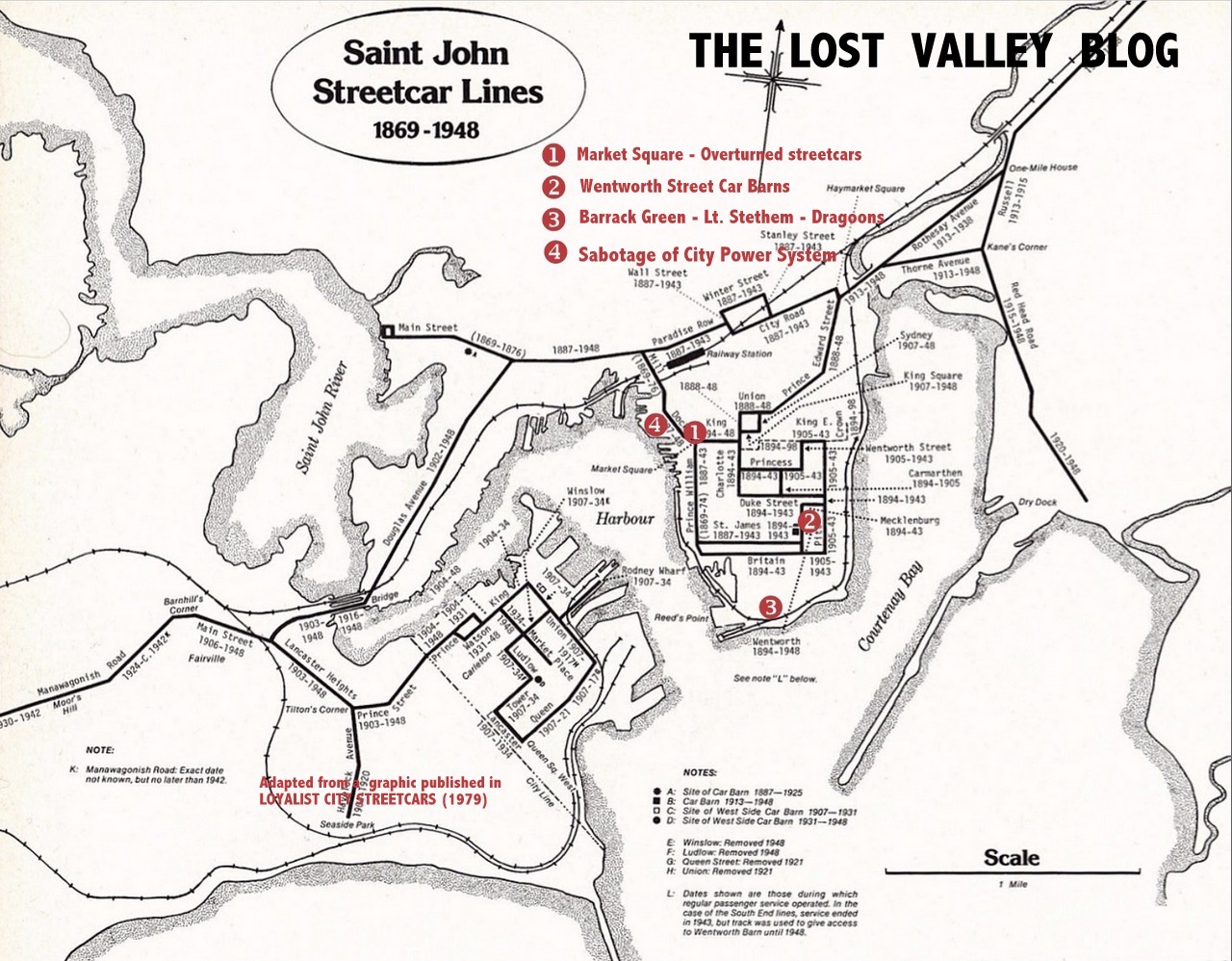nfitz
Superstar
Can't say I've heard of them ...
ARS Canada Rolling Stock ... what kind of arse**** chooses a name like that?
ARS Canada Rolling Stock ... what kind of arse**** chooses a name like that?
Reminds me of China's Dong missileCan't say I've heard of them ...
ARS Canada Rolling Stock ... what kind of arse**** chooses a name like that?
True, provided your customers are in the New England or the NE (granted that over 40 million people).New Brunswick is close enough to the US for shipping cross boarders. As long as it's not "The Rock".

Actually this appears to be them getting it right for once.This strikes me as Metrolinx bungling up trying to get away with not having to pay the cancellation costs for the LRV's needed for the cancelled LRT lines.
Relief Line Governance
https://stevemunro.ca/2017/05/10/inching-ahead-on-subway-plans/The City Manager’s report contains a rather odd statement about the RL:
The role of asset owner and operator is still to be confirmed. For the purposes of planning, it is assumed that provincial funding for the capital construction of the Relief Line is predicated on Metrolinx ownership of the asset. It is also assumed the TTC will be the operator of the Relief Line.
As the local planning authority, work to plan and implement major infrastructure projects in the City requires City Council approval to ensure project planning is integrated with existing land uses, aligned with the City’s Official Plan policies and meets city-building objectives. As the potential operator of the Relief Line, TTC service, design, and operating
standards are a key consideration in the next phase of work to ensure the seamless integration of the infrastructure with TTC’s existing system. TTC Board approval will be required on decisions relating to operations and service planning. The project delivery model will be subject to Provincial and Metrolinx requirements, assuming provincial funding for the construction of the project. [p. 16]
This implies a delivery model more like that used for the Crosstown LRT project rather than an expansion of the TTC subway network. Indeed, this arrangement leaves open the question of technology for the RL, even though the TTC has been planning on the basis of an integrated operation (shared maintenance) with the existing subway.
While the idea of provincial ownership has been used as an accounting scheme by Queen’s Park (owning the asset offsets the debt to build it on their books), it is unclear what would happen for a line with joint funding from all governments. This wording suggests that there is some wishful thinking going on here that Queen’s Park would pay 100% toward the RL’s cost, a rather optimistic premise.
Actually this appears to be them getting it right for once.
Be aware (and discussion on exactly this has ensued for the last week on Steve Munro's blog) that the very same model could be used on the Relief Line:
View attachment 108203
http://www.alstom.com/products-serv.../rail-systems/trains/products/citadis-dualis/
Vid of the Ottawa model here:
Discussion by Munro on the Relief Line not being orthodox subway:
https://stevemunro.ca/2017/05/10/inching-ahead-on-subway-plans/
You missed the qualifying information to arrive at his stating that, most specifically "Crosstown". How much did the City contribute to its funding?Munro also said that this arrangement is premised on QP paying 100% of Relief Line capital costs, which is highly unlikely.
Perhaps you missed the memo? City of Toronto can barely afford a coffee, let alone pay for what it's already on the hook for. How's that SmartTrack and SSE funding coming along there?There's no reason for QP to offer to pay for 100% of the line, when two other governments have indicated willingness to pay 60%. I'm expecting a 20/40/40 cost split.
You missed the qualifying information to arrive at his stating that, most specifically "Crosstown". How much did the City contribute to its funding?
Perhaps you missed the memo? City of Toronto can barely afford a coffee, let alone pay for what it's already on the hook for. How's that SmartTrack and SSE funding coming along there?
What Munro's discussion infers is the Infrastructure Ontario funding model along with private investment. It's the only transit project in Toronto on time, and on budget.
Perhaps you missed Tory's lament on the Canada Infrastructure Bank?
[...]
Tory said he is now working to identify transit and infrastructure projects in Toronto that could work with the bank, but said it’s too soon to say which ones could provide the revenue streams needed to attract private investment.
“We’re in a bit of a hole on (the transit) front, so I’ll be looking,” Tory said.
[...]
https://www.thestar.com/news/canada...lled-to-have-new-federal-bank-in-toronto.html
No further comment at this time. The man lives in a narcissistic dream...
I'm having trouble following you, there's private participation in the AFP model:100% provincial ownership with IO's funding model makes sense for a solely provincially funded projects
http://www.thecrosstown.ca/the-project/fact-sheets/afpMetrolinx is building the Eglinton Crosstown, a $5.3 billion investment from the Government of Ontario to expand transit in Toronto.
The Crosstown will be delivered by Metrolinx, together with Infrastructure Ontario, using the Alternative Financing and Procurement (AFP) model.
All provincially funded projects greater than $50 million are subject to consideration for AFP, as set out in the Ontario government’s long-term infrastructure plan, Building Together.
Under AFP, the public sector establishes the scope and purpose of the project, while the construction work is financed and carried out by the private sector. In some cases, the private sector participant will also be responsible for the maintenance of the infrastructure asset. Metrolinx will retain control and ownership over the project assets.
AFP makes the best use of private sector resources and expertise to provide on-budget and on-time project delivery. If the project runs over budget, the private sector pays. If the project falls behind schedule, the private sector pays. The risks of the numerous and complicated interfaces are transferred to the party best equipped to manage those risks.
AFP projects undergo a value-for-money analysis, that is, the AFP approach is compared to the traditional procurement approach to ensure value for money. Moreover, all AFP projects are open to an independent, third-party review by the Auditor General.
The AFP model is a well-established way of financing and procuring large public infrastructure projects in Ontario and has become the new standard for delivering large-scale projects.
Since 2006, the AFP program has brought more than $23 billion in capital projects to market. AFP is used for projects such as the GO East Rail Maintenance Facility, the Canada Line in Vancouver, the Ottawa light rail transit, the Waterloo light rail transit, and the UP (Union-Pearson) Express procurements.
What strikes me is *apparently* how much of a superior vehicle this is. I don't know how many of the options are available to Ontario buyers, but the parent company in France offers an incredibly wide array of them. Including toilets! Toilets themselves are of interest, but what it indicates is the suitability of this vehicle to do a multitude of tasks that *seems* to cover a vast array of roles, including RER.This seems like a prudent move to me. Metrolinx is trying to avoid a K-W-like scenario where the line will be ready, but no vehicles to run on it. If Bombardier does deliver, then these trains can be shifted to the FWLRT or HULRT. Or at the very least, sold to Ottawa as part of their Phase II (or maybe even Phase III) expansion.
Point is, with all the LRT being built in Ontario, they can find a home for them somewhere.
http://www.railwayage.com/index.php...algary-edmonton-adopt-low-floor-approach.htmlRailway Age
Wednesday, April 05, 2017
Calgary, Edmonton adopt low-floor approach
Written by John Thompson, Contributing Editor
The two pioneering Canadian LRT cities, Calgary and Edmonton, located in the western province of Alberta, are both planning a major shift in their design and operating philosophies.
Edmonton, Alberta’s capital, opened its first line in 1978; Calgary followed three years later.
Both systems, from the outset, adopted high-platform boarding. Edmonton’s stations have been somewhat simple and utilitarian, for the most part, apart from those in the subway section, while Calgary’s have tended to be elaborate and expensive.
Edmonton has about three miles of subway, extending from the northwest fringe of downtown to the University of Alberta, south of the center city. This approach was quite costly, and hindered significant extension of the line for a number of years. To this day, Edmonton Transit operates one long line from the northeast to the southern sector, with a short, recently opened branch to the northwest.
Calgary, from the outset, took a different approach to contain costs, utilizing a transit mall instead of a subway in the downtown, and generally limiting tunnels to short sections. Since 1981, Calgary’s system has grown extensively, culminating in two lines that serve the northwest, northeast, western, and southern sections of the city. The system has grown from its original 8 miles to just over 37 miles.
Siemens LRVs have been the car of choice in both cities, with newer models ordered as the original models pass their 30th anniversaries.
Both cities have recently decided, since low-floor operations can be implemented at significantly lower cost, to pursue this approach on two completely new lines. These will be completely separate operations from the existing high-floor lines, although transfer will be possible. That said, both Calgary Transit and Edmonton Transit have extensions to the existing high-platform routes on the drawing boards, for future construction.
Another advantage of low-floor LRT is that it can be situated on local streets, on reserved track, with less obtrusive stations more acceptable to local residents. [...]




